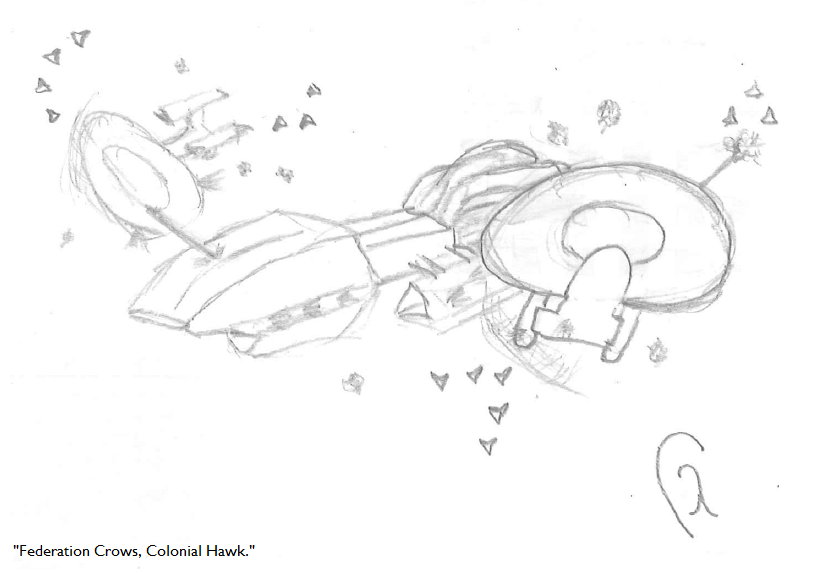Replies by
the Irish Samurai
on 2015-08-20 16:41:00 UTC
Reply
6: Yes, they certainly can be destroyed once they been rolled (hell, if a hit gets through the sidewall and hull armour they can be destroyed before), but it seems like a much lower risk in this situation. The Star Destroyer's weapons, being non-explosive, probably aren't going to do much to the pods, simply because they'll likely be targeted against the ship laying them.
I think the main problem Wayfarer (yes, I'm pretty sure you got that right) had was that she was the trial for this type of weapon design, and had been made by retro-fitting an existing merchant hull. That meant that she was quite slow to roll her pods, and her mission profile meant that she didn't have the back-up from a full task group while she did so. She also ended up going up against opponents with significant defences (if I remember rightly she went up against battlecruisers, when she was meant to be on anti-piracy patrols), which meant that the only way she could beat them was to roll several salvos of pods, then launch them all at once for one massive salve that completely overwhelmed her target's point defence. So while she was assembling her heavy salvo, it was very vulnerable.
The proper pod-layers can lay more pods at once than she could, and of course they tend to operate in large groups, so they can get their overwhelming salvos by having a dozen ships roll two sets of pods, instead of one ship roll two dozen sets. This means that modern pod-layers are much less vulnerable to having their pods killed, as they are more spread out, and the salvo takes less time to assemble.
#7: Obviously my personal head canon is different from yours, but I see the nodes and their gravity bands like a cutting torch - put an object in the way, and that object is going to get wrecked, but the torch (or impellar nodes) are going to be unaffected by the object. Point two of them at each other, and they could both take damage, but if one is significantly more powerful than the other then it will 'win' in short order, and no longer have to worry about taking damage.
The thing is, the gravity bands are intangible objects that are being projected remotely. I don't see why disruption of those bands by physical would cause anything to happen to the actual projectors - but I can see conflicting energy fields setting up some sort of destructive harmonic/oscillation in the emitters. I dunno why, it just seems different to me.
As for Masquerade's 'easy win', it seems quite sensible so far, and I'm struggling to think of a non-Honorverse ship that would be able to overcome that. Even in settings which have powerful defence shields, like Star Trek and Star Wars, generally speaking hammering on those shields will cause them to break. But nothing can get through a military grade wedge - if Masquerade just approaches 'belly up', then rolls when she's good and ready to fire, she'll be able to soak up all the initial incoming fire.
Even a surprise attack from a stealth ship wouldn't necessarily do that much, as they'd have to get lucky and fire down the throat or kilt for it to do any good (which they might not want to do anyway - after all, ships present a much bigger target from the side, so hitting them amidships has got be easier, right?). And if the Masquerade survives the first blow then she'll be able to fight back.
The only thing I can think of off the top of my head that would stand a reasonable chance is something much more massive, that could soak up the kind of punishment a Medusa can dish out, and would actually have a chance to learn about her peculiarities while still being combat effective. Maybe some of the Titans from EVE Online? I dunno, I tend to lose interest in the supermassive stuff.
- Irish
